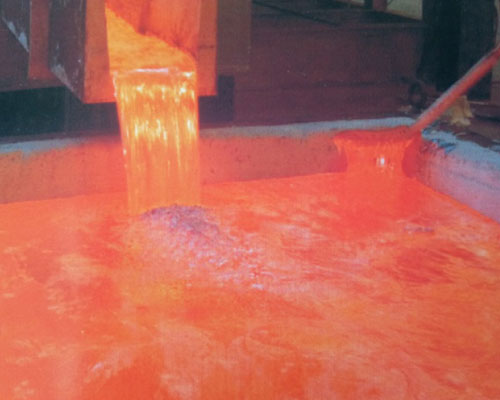Filtration of molten aluminium method based on impurity removal must be adopted, because the degassing method for impurity removal effect is very limited. Due to the interaction between inclusions and hydrogen in liquid aluminum, the methods of hydrogen removal and purification have different degrees of impurity removal.
At present, there are not many purification methods based on impurity removal, which are not as deep as hydrogen removal. There are three kinds of purification methods: flux method, electric flux method and filtration of molten aluminium method.
The essence of flux purification is that inclusions will move from melt to flux spontaneously due to the difference of wettability between contact phases when the flux is used to purify molten aluminum. The impurity removal effect is directly related to the physical and chemical properties of the flux itself, and also depends on the purification process conditions, such as flux dosage, contact condition between flux and melt, temperature, etc. In the past, the flux treatment was mainly based on experience accumulation, and the thermodynamic and kinetic conditions of impurity removal and purification, as well as the reasonable design of flux composition and treatment process, were rarely studied systematically.
Therefore, it is difficult to give full play to the role of flux, which makes it difficult to popularize and apply the flux removal method. For this reason, the author has carried out systematic analysis and research in recent years, and obtained the mathematical expressions of thermodynamics and kinetics of flux impurity removal purification, which can be used to guide the design of flux composition and the selection of treatment process. A variety of high-efficiency impurity removal fluxes have been developed, which have been successfully applied in practice and effectively play the role of flux impurity removal and purification.

The main purpose of filtration of molten aluminium is to make aluminum liquid flow through a certain medium, then the medium will capture inclusions according to a certain mechanism, and cut off the hydrogen adsorbed on the impurities to achieve the purpose of purification, which is one of the effective methods to remove inclusions. At present, according to the form of filter, it can be divided into three types: mesh filter, granular filter, and porous ceramic filter. Porous ceramic filters are divided into rigid ceramic (microporous) and foam ceramic. According to the filtration mechanism, the porous ceramic filter can be divided into filter cake filtration mechanism, deep filtration mechanism, porous ceramics filtration.

